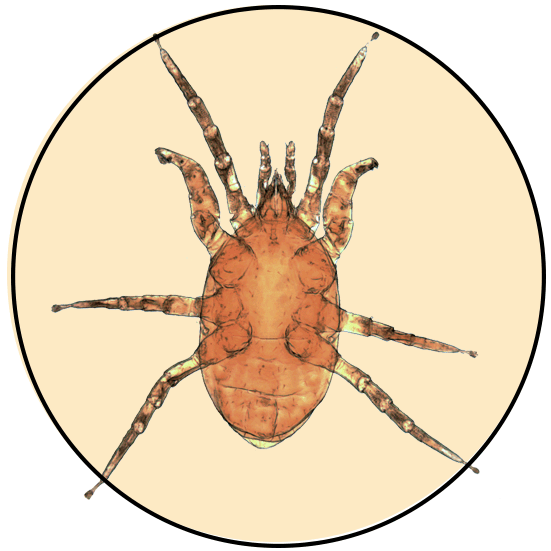
 Hummingbird flower mite collection (donated by Robert K. Colwell)
Hummingbird flower mite collection (donated by Robert K. Colwell)
Hummingbird flower mites feed on the nectar and pollen of the plants that hummingbirds visit and pollinate. These mites mate and produce their young inside the flowers or inflorescences. They move on foot among flowers of the same plant but disperse among plants by hitching a ride on a visiting hummingbird—particularly when their natal inflorescence is running out of flowers. While the bird is sipping nectar, dispersing mites run up the bill and enter the nostrils, hiding out inside the bill, where they await the right moment to disembark at another flower. Hummingbird flower mites are very particular about the flowers they occupy, many using only one plant species that no other hummingbird flower mite species uses. In contrast, they hitch a ride on any hummingbird that visits their host flower. By olfaction, they can tell which species of plant their carrier is visiting, from inside the bill, and disembark only at the right flower. They are found throughout the geographic distribution of hummingbirds (the New World), with the exception of the highest latitudes.
The term hummingbird flower mite describes a way of life, one that has arisen, independently, within the mite family Ascidae (Order Mesostigmata) at least twice. All known species in the sister genera Tropicoseius and Rhinoseius are exquisitely adapted for this way of life, and one—and possibly two—major clades within the genus Proctolaelaps are also hummingbird flower mites.
This collection, assembled over nearly 50 years, includes more than 7,000 slide-mounted specimens, all with full locality data. Of these, nearly 3000 specimens of nearly 50 species are identified authoritatively to genus and species, including 578 paratypes of 16 species of hummingbird flower mites newly described by Naskrecki and Colwell (1998).
In addition, the collection includes 55 paratypes of two species of the new ascid genus Xanthippe (Naskrecki and Colwell 1995), which breed and feed in the flowers of the palm, Socrateaexorrhiza, and are thought to disperse between inflorescences on nitidulid beetles of the genus Mystrops.
The specimens are catalogued taxonomically, by host plant or phoretic carrier, by locality, and by collector. Within the collection, specimens are located by slide-box number. At present, this information is in a searchable pdf.
References
Naskrecki, P., and R. K. Colwell. 1995. A new genus and two new species of Melicharini from Venezuela (Acari: Mesostigmata: Ascidae). Annals of the Entomological Society of America 88: 284–293. pdf
Naskrecki, P., and R. K. Colwell. 1998. Systematics and host plant affiliations of hummingbird flower mites of the genera Tropicoseius Baker and Yunker and Rhinoseius Baker and Yunker (Acari: Mesostigmata: Ascidae). Entomological Society of America, Lanham, Maryland.